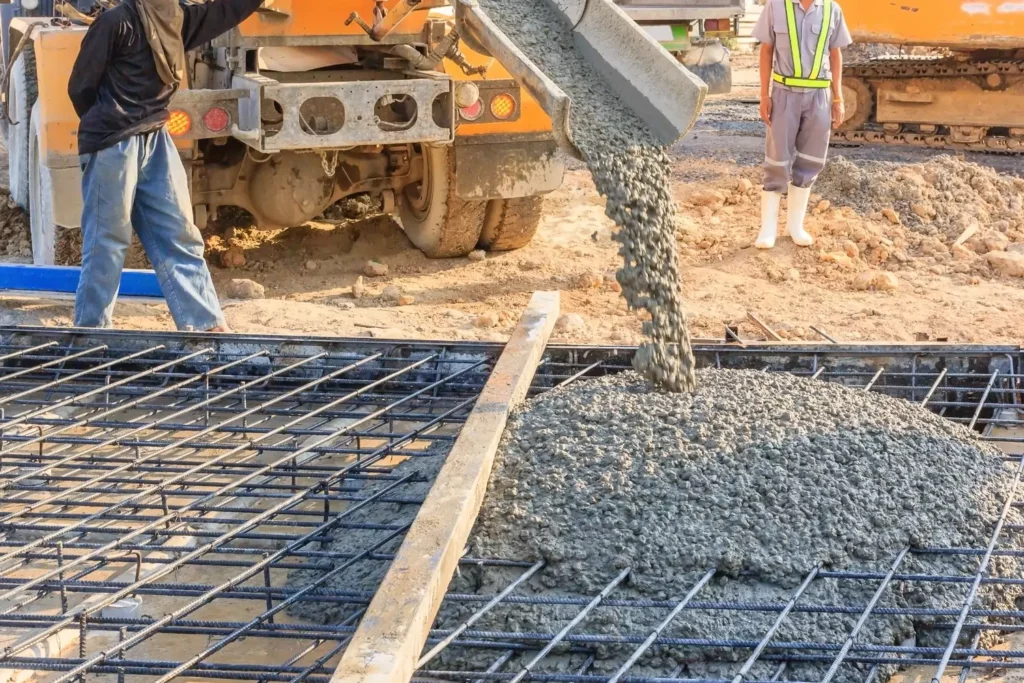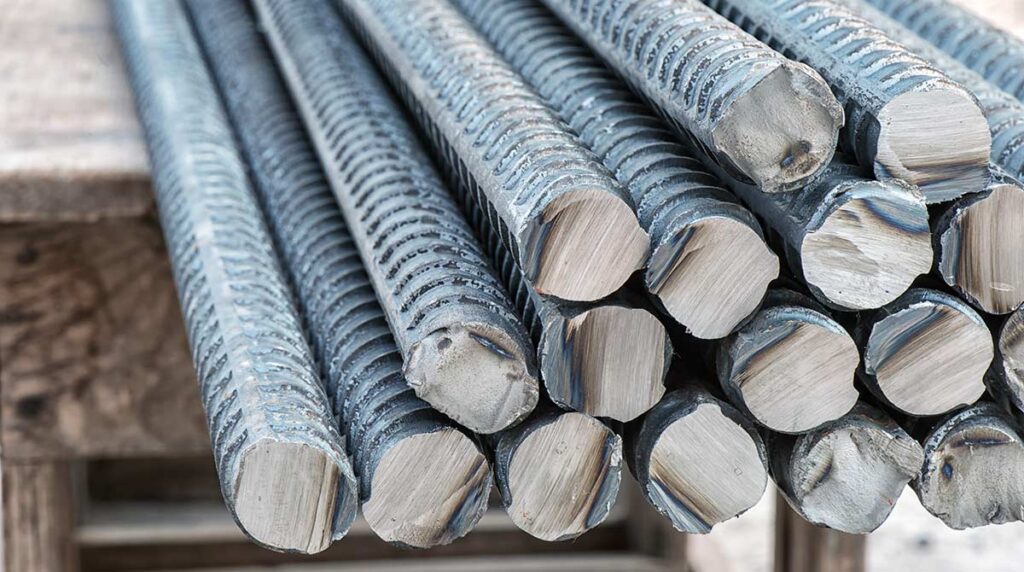Reobar, often referred to as reinforcing bar, plays a crucial role in the structural integrity of many construction projects. In this article, we will dive deep into its definitions, grades, applications, and safety considerations relevant to reobar use. Understanding reobar is essential for engineers, builders, and anyone involved in the construction industry.
The basics of reobar: An introduction
Before delving into the specifics, it’s important to grasp the fundamental concept of reobar. Reinforcing bar is a steel bar or mesh of steel wires used to reinforce concrete and masonry structures. It bears tension and holds the material together, preventing the concrete from cracking under tension.
The importance of reobar in construction cannot be overstated. Concrete is excellent under compression but relatively weak under tension, making rebar essential for enhancing the tensile strength of concrete. This allows for the creation of sturdy infrastructures, from homes and bridges to skyscrapers.
What is rebar?
Rebar is commonly manufactured from steel and designed to be embedded in concrete. It typically has ribs or surface deformations that help it bond effectively with concrete. The most commonly used grades of rebar are categorised based on their yield strength, which is the amount of stress a bar can withstand before permanent deformation occurs.
Read more on: The Benefits of Using Reo Bar in Commercial and Residential Projects
The importance of rebar in construction
The application of rebar is integral in various structural components, including beams, slabs, columns, and walls. By integrating rebar into concrete, it provides structural resilience while optimising the overall design of the construction. This is especially relevant in regions that experience seismic activity or heavy loads, where the added tensile strength mitigates the risk of structural failure.
Moreover, the use of rebar can significantly influence the longevity and durability of a structure. When properly placed and installed, rebar helps to ensure that the concrete can withstand natural elements, such as moisture, temperature fluctuations, and even chemical exposure. This is particularly critical in coastal areas where saltwater can accelerate the corrosion of steel, making the choice of rebar and its protective coatings a vital consideration in the design phase. Additionally, advancements in technology have led to the development of corrosion-resistant rebar, which offers enhanced performance and longevity, thereby reducing maintenance costs over the lifespan of the structure.
Furthermore, the design and placement of rebar must adhere to specific engineering standards and codes, which vary by region and type of construction. These guidelines ensure that the rebar is used effectively to distribute loads and stresses throughout the concrete. Engineers often conduct detailed calculations and simulations to determine the optimal size, spacing, and configuration of rebar for each project. This meticulous planning is essential not only for the safety and stability of the structure but also for its economic viability, as improper use of rebar can lead to costly repairs or even catastrophic failures. Read more about stresses on https://www.nccih.nih.gov/health/stress

Exploring the different grades of rebar
The classification of rebar into different grades allows engineers to select the appropriate material for their specific project needs. The grading primarily reflects the yield strength of the bar, with higher numbers indicating a greater ability to withstand stress before deformation. Common grades include Grade 40, Grade 60, and Grade 75.
Grade 40 rebar: Features and uses
Grade 40 rebar, with a yield strength of 40,000 psi, is generally used in less demanding applications. This grade is commonly employed in residential construction for foundations, slabs, and smaller structures where high tensile strength is not critical. It is cost-effective and provides a practical balance between performance and expense. Additionally, Grade 40 rebar is often utilised in DIY projects and smaller-scale renovations, making it accessible for homeowners and contractors alike. Its lower strength requirements mean that it can also be easier to handle and cut, which can be an advantage in situations where speed and efficiency are paramount.
Grade 60 rebar: Characteristics and applications
Grade 60 rebar features a yield strength of 60,000 psi and is widely used in both residential and commercial applications. Its enhanced strength makes it suitable for moderate to heavy construction projects, such as beams, bridges, and high-rise buildings. Engineers often favour this grade when they require a reliable combination of strength and ductility. Furthermore, Grade 60 rebar is particularly valued in seismic design, where its ability to absorb and dissipate energy during an earthquake is crucial. This makes it a preferred choice in regions prone to seismic activity, ensuring that structures can withstand the dynamic forces generated by such natural events.
Grade 75 rebar: Understanding its unique properties
Grade 75 rebar boasts a yield strength of 75,000 psi, making it one of the strongest options available in the market. Its high strength allows for the construction of infrastructure projects that require exceptional load-bearing capabilities. However, due to its higher cost, it is primarily used in specialised applications like heavy industrial facilities, bridges, and infrastructure improvements in seismically active regions. The use of Grade 75 rebar is also prevalent in the construction of high-performance concrete structures, where its strength can significantly enhance the overall durability and longevity of the project. Additionally, its unique properties allow for reduced material usage without compromising structural integrity, which can lead to more sustainable construction practices and lower overall project costs in the long run. To know more about durability click here.
The science behind reobar grades
Understanding the science behind the grading of rebar is crucial for anyone involved in construction. The grading system provides insights into how different compositions of steel can affect the bar’s performance in various applications. This knowledge is particularly important in ensuring that structures can withstand environmental factors and the stresses of everyday use, thereby extending their lifespan and enhancing safety.
How reobar grades are determined
The grades of rebar are determined using standard testing procedures that evaluate yield strength and tensile strength. Manufacturers follow strict guidelines set by regulatory bodies to ensure that the rebar conforms to the required specifications. These assessments are vital for ensuring safety and performance in construction applications. Additionally, factors such as the bar’s diameter, surface characteristics, and the presence of any coatings can also influence its grade, making the testing process comprehensive and multifaceted.

The role of carbon content in rebar grading
Carbon content plays a significant role in the grading of rebar. Higher carbon content can lead to increased strength but could compromise ductility. This trade-off is crucial because while it is essential for the rebar to bear heavy loads, it should also be versatile enough to withstand various stress conditions without breaking. Furthermore, the balance of carbon with other alloying elements, such as manganese and chromium, can enhance specific properties of the rebar, allowing it to perform better in particular environments, such as those exposed to high temperatures or corrosive substances. Understanding these nuances helps engineers select the appropriate rebar for their projects, ensuring optimal performance and longevity.
Practical applications of various rebar grades
When selecting rebar for a project, it is imperative to understand the practical applications of each grade to make informed decisions. The choice of rebar influences the overall structural integrity and longevity of the construction.
Residential construction and rebar
In residential construction, Grade 40 rebar is commonly utilised for smaller projects such as footings and floor slabs. It provides sufficient strength for residential structures without incurring excessive costs. For larger or more complex homes, Grade 60 may be preferred to enhance the structural resilience against potential loads. Additionally, the use of Grade 40 rebar can often be seen in the reinforcement of retaining walls and driveways, where the demands are less intense but still require adequate support to prevent cracking and deformation over time. Homeowners and builders alike appreciate the balance of affordability and performance that Grade 40 offers, making it a popular choice for many residential applications.
Commercial construction: Choosing the right rebar grade
In commercial building projects, engineers typically lean towards Grade 60 rebar due to its balance of strength, flexibility, and cost-effectiveness. For skyscrapers or other significant commercial developments, Grade 75 may be employed for critical structural components requiring exceptional load-bearing capabilities. Furthermore, the choice of rebar grade in commercial settings is often influenced by the specific design requirements and the anticipated lifespan of the structure. For instance, in high-traffic areas such as shopping centres or office buildings, the increased use of Grade 60 ensures that the framework can accommodate not only the weight of the building itself but also the dynamic loads imposed by occupants and equipment. This careful consideration of rebar selection ultimately contributes to the safety and functionality of the built environment.
Infrastructure projects and rebar selection
Infrastructure projects often necessitate the use of higher-grade rebar, such as Grade 60 or Grade 75, given the essential need for durability and resistance to various environmental conditions. Bridges, highways, and tunnels must withstand extreme weather patterns and heavy traffic loads, making the selection of the appropriate rebar grade vital for public safety and functional longevity. In addition to the structural demands, considerations such as corrosion resistance become paramount, particularly in coastal or industrial areas where exposure to salt and chemicals can significantly impact the lifespan of the materials used. As a result, engineers may also opt for epoxy-coated or galvanised rebar to further enhance the durability of these critical infrastructure components. This strategic approach not only ensures compliance with safety standards but also promotes long-term sustainability in public works projects.
Safety considerations when using different rebar grades
Safety is a paramount concern when working with rebar in construction. Each grade has specific handling and installation considerations that must be adhered to in order to ensure the well-being of workers and the integrity of the structure.
Handling and storage of rebar
When handling rebar, it is essential to use appropriate lifting techniques and personal protective equipment (PPE) to avoid injuries. Additionally, rebar should be stored in a dry area free from dirt and debris to prevent corrosion and physical damage that could compromise its structural integrity.
Installation safety measures for rebar
During installation, workers must follow specific safety protocols to prevent accidents. This includes ensuring that rebar is correctly tied and positioned to avoid movement during concrete pouring. Additionally, the use of safety gear such as gloves, hard hats, and high-visibility vests is critical to protect workers from potential hazards associated with heavy materials and machinery.
In conclusion, understanding the different grades and applications of rebar is essential for anyone involved in construction. By selecting the appropriate rebar grade for a specific project, one can enhance structural integrity, ensure safety, and prolong the lifespan of the construction. Proper handling and storage practices also contribute significantly to maintaining the quality and reliability of rebar over time.
